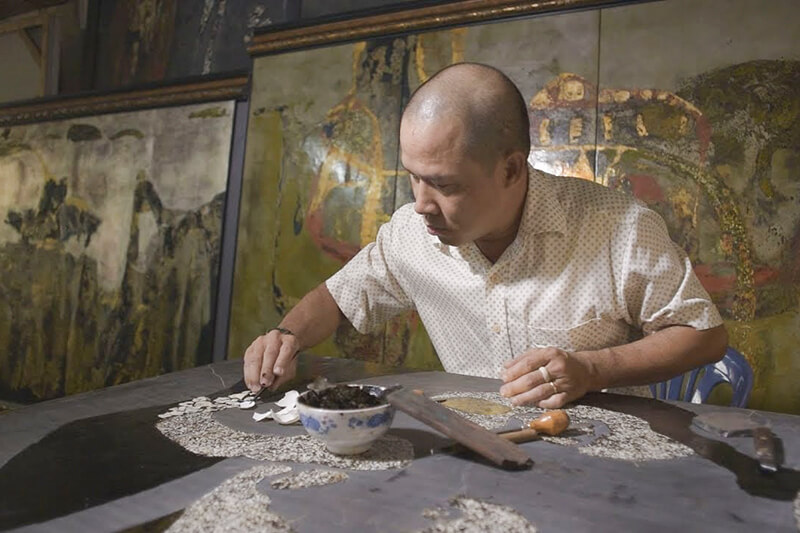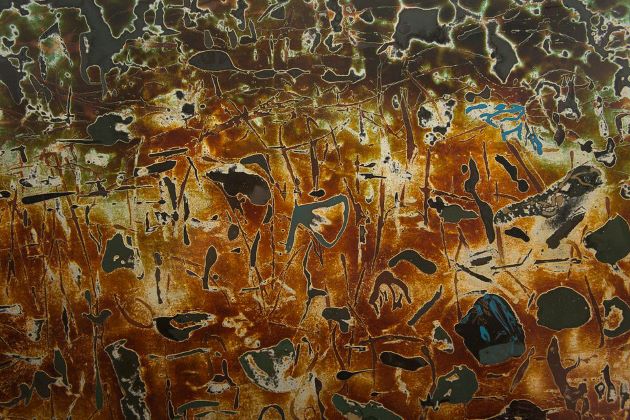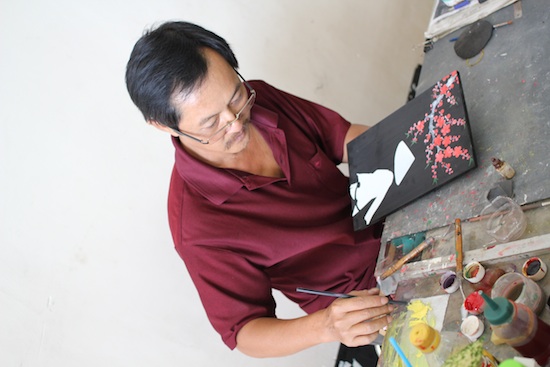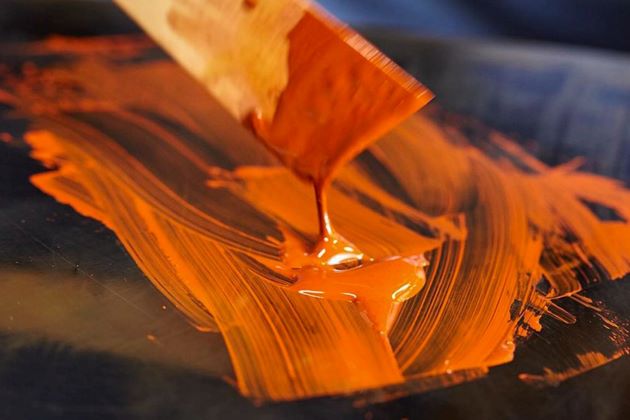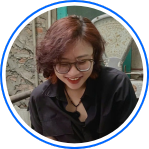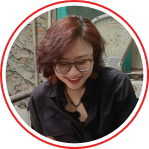Vietnamese art reflects a mixture of influences: Vietnamese traditional art, influences from China and influence from the French during the colonial period. Over a decade ago Vietnam opened up to the world. The international art market started to see the talents of Vietnamese artists and the variety of styles in Vietnamese paintings.
What is Lacquer Paintings?
Lacquer painting is a form of painting with lacquer which was practised in East Asia for decoration on lacquerware, and found its way to Europe and the Western World both via Persia and the Middle East and by direct contact with Continental Asia. The artistic form was revived and developed as a distinct genre of fine art painting by Vietnamese artists in the 1930s; the genre is known in Vietnamese as “sơn mài”.
The Materials Used in Vietnamese Lacquer Paintings
The Board
The artists buy the boards ready-made from suppliers. They come in a variety of sizes. The core of the board is made from plywood. One layer of lacquer is applied to the plywood which is left to dry. Next, the thin cotton cloth soaked in clay is attached to both sides of the plywood. After the cotton/ clay mixture dry, the board will be smooth.
The process is performed five times. Layers of black lacquer are then applied, polished. Thus, the final product appears as a piece of blackboard, very smooth, and durable. It consists of several layers, is very resistant, and will not crack due to fluctuation in temperature or humid. It may be wrap slightly due to changes but it is quite easy to straighten it again, as it remains flexible.
The Lacquer & Colors
Lacquer is a clear sap coming from any of six species of trees growing in Viet Nam. Lacquer is harvested in the same way as rubber, by making an incision and letting the sap flow. Fresh lacquer is whitish and turns brown upon exposure to air. It should be noted that lacquer is not a harmless substance. It is a common skin irritant and a cause of contact dermatitis, as well as being potentially carcinogenic. Black lacquer stems from a chemical reaction between lacquer and iron and results from stirring the lacquer with the iron rod for a few days. Lacquer will be mixed with various natural or artificial dyes to produce the colors the artists want.
Several shades of red are extracted from a naturally occurring red mineral, cinnabar (mercuric sulfide). White produces from the eggshell. Eggs from ducks are used because they have a better structure than hen’s egg. The eggshells are cleaned and sometimes even burned to obtain a brownish tinge. Most bright colors come from artificial dyes.
Other Materials
Several other materials may be used to make lacquer paintings, some of the most common being gold leaf. Silver is used below the layers of colors to create an effect of immense luster. Gold leaf, on the other hand, is often applied as the final layer. Interesting use of gold leaf appears as bright light flowing through the window. A range of other materials may also be used such as shells, sand, epoxy, and clay.
How to Make a Lacquer Painting
Applying Lacquer & Polishing
Making a lacquer painting is a long and arduous process. It may take several months depending on the specific technique of the artist and how many layers of lacquer are included. Firstly, the composition of the painting may be drawn with chalk on the board, white color is added through the use of eggshell. A pattern is carefully carved on the board. The pieces of clean eggshell are glued to the cavities, and the surface is then made smooth. Clean lacquer is applied and left to dry, and the pattern is then polished.
A basic lacquer layer of colorful lacquer is applied to the board and left to dry. Silver leaf is stuck to the lacquer and covers the silver leaf. New layers of colored lacquer are painted with a brush, each with a different color. In between, a clear lacquer is also applied. The artist sometimes applied up to ten layers or more of colored and clear lacquer. The paint is left to dry between each application and the layers are also smoothened.
The most important of the process, however, takes place after the final layer has been applied. The artist will rub and polish different parts of the painting until he obtains the preferred colors for various parts of the painting. Since different colors are located in different layers, rubbing must be done with great care by using fine sandpaper and the mix of charcoal powder and human hair. The artist must remember in what layer he puts the color and has to be extremely careful not to rub too hard because the painting will be irretrievably spoilt if he rubs through the layer he wants to keep a specific color.
Caring
Lacquer painting is very durable. The board is hard and strong and is not easily damaged. The surface of clear lacquer is protective and the painting can easily be polished by the palm of the hand to make it clearer and more lustrous. Vietnamese lacquer paintings are truly a piece of art that may last for generations.

